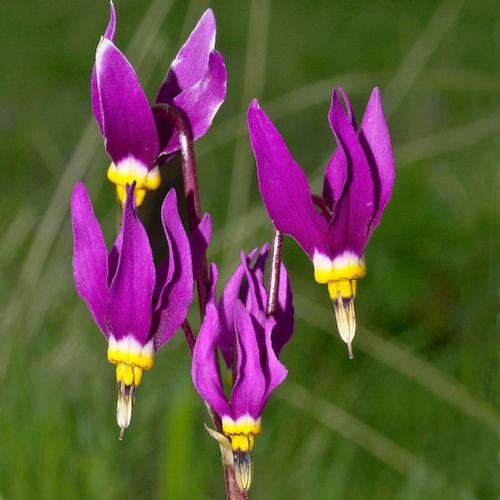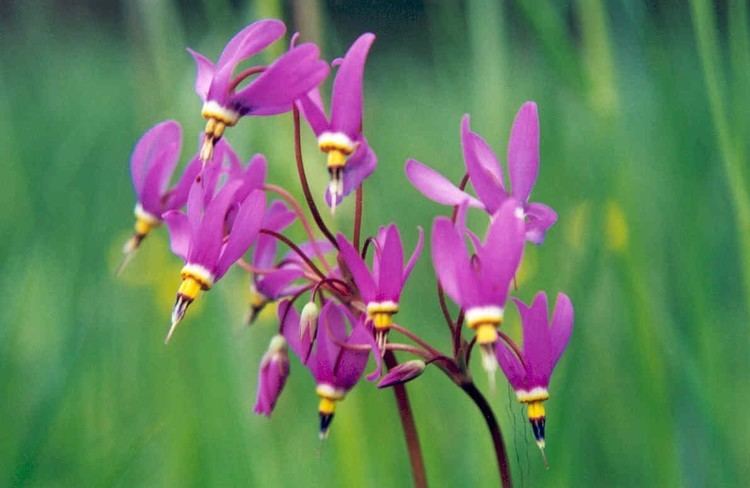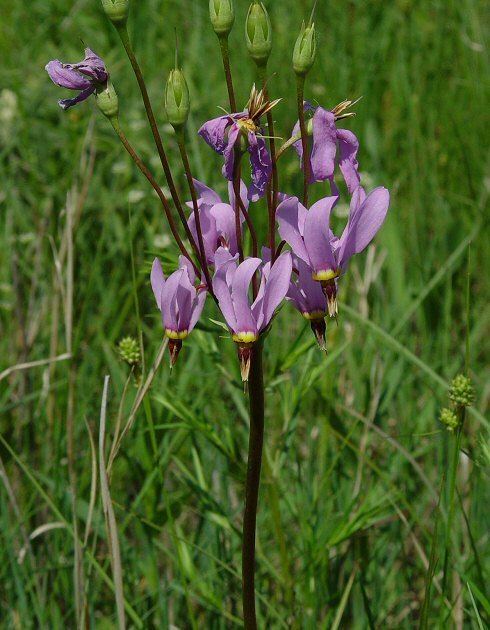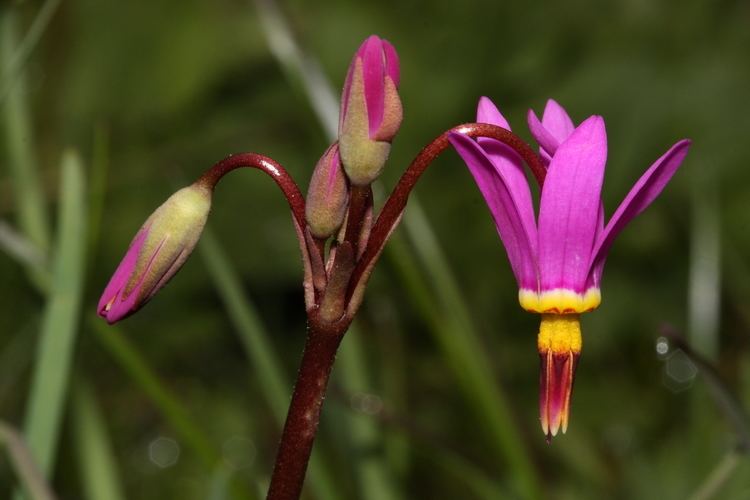Kingdom Plantae Family Primulaceae Higher classification Primulaceae | Order Ericales Scientific name Dodecatheon Rank Genus | |
 | ||
Lower classifications Dodecatheon meadia, Dodecatheon pulchellum, Dodecatheon hendersonii, Dodecatheon jeffreyi, Dodecatheon clevelandii | ||
Minnesota native plant prairie shooting star dodecatheon meadia var meadia
Dodecatheon is a genus of herbaceous flowering plants in the family Primulaceae. The species have basal clumps of leaves and nodding flowers that are produced at the top of tall stems rising from where the leaves join the crown. The genus is largely confined to North America and part of northeastern Siberia. Common names include shooting star, American cowslip, mosquito bills, mad violets, and sailor caps. A few species are grown in gardens for their showy and unique flower display.
Contents
- Minnesota native plant prairie shooting star dodecatheon meadia var meadia
- Dodecatheon meadia
- Classification
- Cultivation
- Species
- References

The stamens are thrust out with the sepals bent back. The flowers are pollinated by bees, which grab hold of the petals, and gather pollen by vibrating the flowers by buzzing their wings (buzz pollination). The vibration releases pollen from the anthers.
Dodecatheon meadia
Classification

Dodecatheon is related to the genus Primula (primroses and related plants); in fact, Primula without Dodecatheon is paraphyletic. One way of avoiding this is to move the Dodecatheon species into Primula. If this is done, the former genus Dodecatheon becomes a monophyletic section, Primula subg. Auriculastrum sect. Dodecatheon (L.) A.R.Mast & Reveal.
Cultivation
Dodecatheon needs good drainage and often dry soils in summer and winter when plants are dormant, in the spring plants like moist soils for best growth. Plants grown in dry soils tend to be smaller and lower growing. Since plants typically go summer dormant, seed raised plants need three or more years of growth before they are large enough to bloom. For some Dodecatheon, if given frequent light fertilization and kept moist, dormancy can be delayed resulting in larger plants after germination and the interval between germination and flowering decreased by a year or two. Another technique to shorten the interval between seed germination and flowering is to place the plants in a cooler after dormancy has set in, in late spring, and after a number of weeks move the plants to a shadehouse in midsummer where new growth will start. The flowers need buzz pollination to produce seeds.
Dodecatheon can be propagated by division in winter.
Species
There are 17 species:

